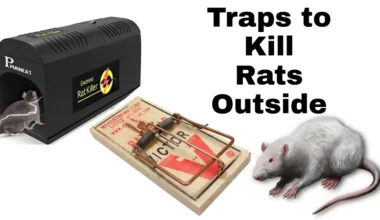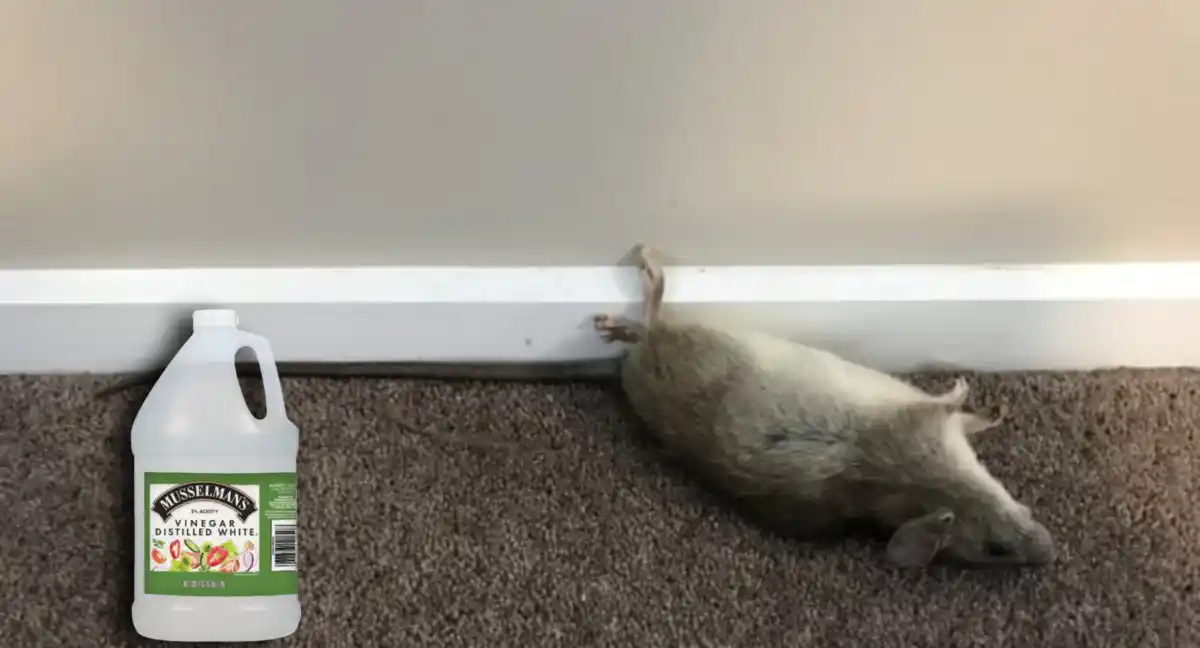Despite being unwelcome visitors, rats are one of the most prevalent creatures coexisting with humans. They damage human properties, necessitating the use of rat traps in urban, suburban, or rural settings. However, some rats can outsmart getting caught. So, if you’re fighting rats on your property, this guide will help you catch a smart rat in the house.
How to catch a smart rat in the house

Follow the tips below to catch a smart rat in the house:
1. Get to know the rat you’re dealing with
If the rat keeps outsmarting your trapping methods, take out time to understand its mode of operation. Get a video camera equipped with a low-light option and wide-angle lens. Install it overnight in the suspected active areas may be necessary.
The footage captured by the camera should reveal the secretive behaviors of the rat, providing the necessary information to effectively trap it.
Take the time upfront to employ this technique and avoid costly callbacks.
2. Pick the right trap for the rat
You don’t want to use a mouse trap when dealing with a smart rat. The typical house mouse’s length measures 2.5 to 4 inches, with a tail of equal length. A brown rat (Norway Rat), on the other hand, has a body that typically measures between 7 to 10 inches in length, with a tail that adds 6 to 8 inches. Given these differences, rat traps must be significantly larger than mouse traps.
The problem is that many homeowners are unable to differentiate between rats and mice and may not know how to determine which rodent they are dealing with during an infestation.
Before you pick a trap, try to tell whether you are dealing with a rat or not. Start by looking at the paw prints. Brown rat paw prints are typically around 20mm in width, while mouse paw prints are usually less than 10mm wide.
Another way to differentiate is by examining the droppings. Rat droppings are roughly the size of pumpkin seeds, while mouse droppings are closer in size to sunflower kernels. In addition, while mice mostly nest inside homes, rats are active both indoors and outdoors.
The idea is that due to the bigger size of rats, your rat traps must be at least twice the size of mouse traps to catch a smart rat.
3. Trap rats from outside first
When smart rats invade a home, it’s often due to an increasing rat population in the surrounding area. If they have infiltrated your house but not your neighbor’s, it is likely because your home is less secure.
The first solution that comes to mind is sealing any gaps and using steel wool to plug holes in your walls, roof, windows, and vents. But it shouldn’t stop there — make sure to also remove any convenient paths allowing rats free movement on your property.
For example, black rats often gain access to roofs by climbing trees and traversing overhanging branches. If this is a concern, trim back any branches and ensure that no trees or bushes extend within three feet of your walls or roof. Place baited snap traps along fences, trellises, and tree branches.
If necessary, secure the traps to branches, rafters, and roof pipes using wire.
4. Be strategic with rat trap placement location
Rats rely on walls and fences and are unlikely to venture into open spaces. Thus, your traps should be placed along walls in low-light areas, near suspected rat pathways.
Experts recommend placing traps inside closets and under wall-adjacent furniture like sofas, chairs, and cabinets. You can attract rats using a shoebox. Cut holes on both sides of the box and place it along a suspected rat route, with a baited trap inside. The box will pique the rat’s interest and once they enter, they will not be able to escape.
5. Use the specific rat’s diet to bait it
The optimal bait to catch a smart rat in the house will depend on the species of rat you are targeting.
Different rat species have different dietary preferences. For example, black rats, which climb trees and enter homes through small holes in attics, are attracted to peanut butter. On the other hand, brown rats, which forage in the garbage and enter homes through tiny crevices, are attracted to pungent cheese.
Regardless of the dietary habits of the smart rat you are targeting, it is best to use baits that emit strong scents, including nuts, fish, or moldy cheese to attract them to the traps.
6. Introduce the rat to the trap
Rat’s trust plays a key role in catching them. Once a rat considers your trap friendly, then it is more likely to get caught.
Contrary to popular belief, rats are not easily fooled, even though they have small heads. They tend to be cautious of new objects in their environment, including rat traps, which might go unnoticed if placed suddenly in the open. A rat may wait for several days to pass before it approaches your trap.
In cases of persistent infestations, a proven technique for elimination is to get the rats to trust the traps before setting them.
Place the trap in an active area but do not activate it. Let the rats feed off the unset trap for 1-3 days until they have become accustomed to it as part of their environment. Then, re-bait the trap and set it to capture the next smart rat in your house that comes along.
7. Don’t handle the trap with bare hands
When setting up and baiting a snap trap, make sure you wear gloves and use kitchen utensils to apply the bait. Rats are often wary of human odor and can detect the scent of oil left by fingerprints.
So, if you do come into contact with the trap with your bare hands, wash it thoroughly with hot water before setting it. Although fingerprints will not completely compromise the effectiveness of the trap, your chances of catching a rat are higher if your scent is not present on the trap at all.
8. Set multiple rat traps
If you suspect only a single smart rat in your house, one or two well-placed traps should be sufficient to solve the problem. But if there is a larger infestation, you may need to set several traps around your house to catch a smart rat.
If you identify rat presence in your backyard or garage, it may be helpful to make your property less appealing to them by:
- sealing away garbage;
- clearing leaves from structures; and
- storing firewood and kindling at least one foot off the ground.
Your next step is to place several traps along your backyard fence, the sides of your house, and along the walls of your crawlspace and attic. Lastly, place more traps along any suspected rat activity paths within your main living area to ensure complete coverage.
9. Zap the rat instead of trapping
Basic snap traps and box-covered traps are effective, however, a rat zapper is one step above these simpler trapping devices. Rat zappers typically operate on D-size batteries and are compact enough to fit against walls.
You just have to bait the inside with peanut butter, turn on the switch, and let your zapper device do its job of catching smart rats.
When a rat has been caught, you should see a flashing indicator light, typically ‘red’ depending on the manufacturer.
Take out and dispose of the rat in a sealable plastic bag. Don’t hesitate to rebait the trap and place it back in the rat’s path. A typical zapper can deliver up to 8,000-volt shock, which instantly eliminates a rat without a mess.
10. Catch a smart rat with an electronic trap
If you are dealing with a rat problem in your home, garage, or office, get an electronic trap; it is a more powerful alternative to traditional snap traps. This mailbox-like device operates on C-size batteries and uses an electric shock to eliminate rats instantly.
Electronic rat traps are simple to set up and use. You don’t even need food bait for it to work. Moreover, an electronic trap can kill up to 50 rats on a single set of batteries. It comes with an indicator light that shows when a kill takes place.
11. Place traps along walls
Rats follow walls for two strategic reasons: Firstly, they use their whiskers to detect objects in the dark. By keeping one set of whiskers in contact with a wall, they can determine if they are still on the correct path. Secondly, traveling along a wall offers protection as they only need to be vigilant on the exposed side of their route.
As a result, traps are most effective when positioned against a wall at a 90-degree angle, with the trigger side closest to the wall.
If you must place a trap parallel to a wall, set it up back-to-back with another trap facing the opposite direction to increase your chances of catching a rat coming from either direction. Otherwise, keep your traps spaced at least 15 feet apart from each other.
12. Disguise your rat trap
Consider disguising your traps to catch a smart rat in your house. One method is to fill an empty soda cardboard carton with sawdust, bury an unset snap trap beneath it, and create a food trail leading to the box, including directly over the trigger. Once the rat has become familiar with the box and is actively taking the food, place only one piece of food directly on the trigger and set the trap.
Another option is to use large glue trays, placed along rat runways, but covered until the rat tracks are noticeable. Then, remove the cover and secure the glue trap to the surface.
Read also: are rat-damaged storage units insured?
Don’t use poisoned baits on smart rats
Just because a trap has not been triggered does not mean it has not been visited by a rat. The rat in question may have been clever enough to steal the bait without being caught. If the snap trap was not successful the first time, simply try it again. There is no need to use slow-acting poisons as snap traps are designed to kill instantly.
Using poison with edible bait can lead to numerous issues. For instance, if a rat steals the bait and drags it across the floor, the poison could potentially spread, creating a hazardous situation for bare feet, especially if there are pets or children in the home.
Moreover, poisoned bait increases the likelihood of a rat dying in a hidden location, making it difficult to find and remove the decaying, odoriferous body.
For maximum success in trapping a rat, keep the bait small and positioned in the center of the trap. For example, if you bait the trap with a piece of shrimp, a rat may only take the tip, triggering the trap without being caught, and consuming the treat elsewhere.
Why are rats so smart?
Is it because they are smarter than their colony counterparts and know how to evade traps and baits? The fear of new objects and animals, including those of the same and other species, is actually widespread in the animal kingdom, including humans. This behavior is known as neophobia. Neophobia acts as a survival strategy for rodents. In the wild, rats are vulnerable to predation once they leave the nest.
Their primary defense mechanism is to use familiar pathways under cover and to quickly reach a burrow or other hiding place. As a result, the rat relies on its past experience of being able to move swiftly and accurately in its environment. This way, it can quickly reach one point to another using the shortest route, reducing its exposure time to danger and predators. Thus, any sudden changes in its living space are met with suspicion and caution, at least temporarily, until the rat adjusts.
Even a new hole, such as a bait station, that suddenly appears in a rat’s path will initially be approached with caution. From the rat’s perspective, the hole may already be occupied by a snake or other predator. In essence, neophobia protects the rat from the consequences of its curiosity.
The avoidance of new things and unfamiliar animals is a common behavior in the animal kingdom, including rats. This neophobic behavior is a survival strategy for rodents, as it minimizes their exposure time to predators and danger. New objects, such as bait stations, will be approached cautiously by rats as they may be occupied by predators.
The speed at which rats overcome their neophobic reactions to new foods depends on the availability of resources. If food is abundant and easily accessible, it may take longer for rats to consume new food. However, in most cases, rats will overcome their neophobia to new food within a day. In some cases, where rats have been feeding on the same food for years, they may ignore all new baits and traps.
Conclusion
If you are uncomfortable with catching smart rats in your house but need to keep them out, the humane and advanced solution is to get an ultrasonic device. This device emits high-pitched sounds in a range of frequencies that are audible only to rodents, making the noises unbearable to rats. Place the device in your attic and in your basement to end all signs of rat activity without the need for traps, dead rodents, or mess.





